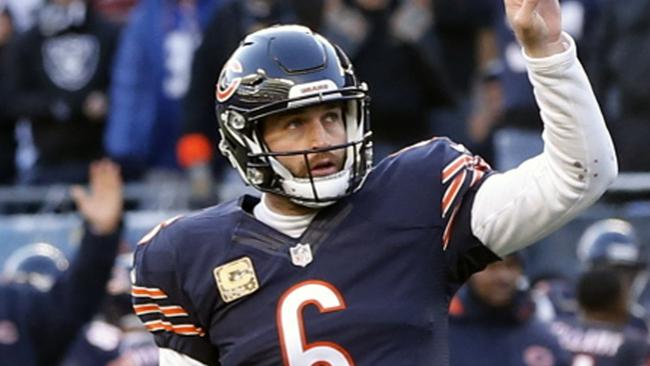Why Moses Mbye is worth $2.5 million
MOSES Mbye is set to sign a $2.5 million extension with the Bulldogs, and given the current landscape of the NRL he’s worth it.

Bulldogs
Don't miss out on the headlines from Bulldogs. Followed categories will be added to My News.
MOSES Mbye is set to announce a lucrative contract extension with Canterbury, with speculation pointing towards a four-year, $2.5 million deal that immediately makes him one of the highest paid players in the NRL.
A common reaction in the immediate aftermath was slight incredulity — Mbye’s talent is obvious and his skill is plain to see, but he only has 23 matches in the halves in his nascent career and, as young players are prone to do he tailed off badly towards the end of the season.
To accommodate Mbye’s massive contract, the Dogs willingly shipped incumbent Blues halfback Trent Hodkinson off to Newcastle and regardless of Mbye’s potential to commit that much money and make such aggressive roster moves to accommodate any player is fraught with complications.
The crux of the matter, and the one that fans will be debating from now until Round 1, is whether or not Mbye is worth the cash. The easy answer is to say yes, but the real answer is far more complex.
Considering the current halves landscapes, Mbye is not overpaid because a four-year, $2.5 million contract for a top line half is exactly what the market will bear. Rest assured that if Canterbury had not stumped up the deal, another team would have.
Canterbury aren’t paying Mbye because of what he has done, they’re paying him based on what he might do in the future.
Paying on potential is a dangerous game but given the perceived scarcity for quality halfbacks it makes more sense to possibly overpay Mbye now than risk losing him and wait for the next gun halfback to come along.
It’s easy to say that the smart move is to wait and see rather than overcommit, but that belies how difficult it is to find a true franchise halfback. The situation of Manly (who have progressed seamlessly from Michael Monaghan to Matt Orford to Trent Hodkinson to Daly Cherry-Evans) and Melbourne (who had a similarly good run from Brett Kimmorley to Orford to Cooper Cronk) is the exception rather than the norm.
Halfbacks that can put together a strong season or two aren’t scarce, but a halfback who can lead a team for the next 10 years and become the focal point of an entire club? They’re worth their weight in gold.
RETENTION: Mbye set to stay at Belmore
SHOCK: Tragedy puts Roberts future on hold
For example, since Peter Sterling retired in 1992 the Eels have had 32 players appear at halfback. Between the retirement of Craig Coleman at the end of that season and the debut of Adam Reynolds in 2012, the Rabbitohs had 37 players fill in at the scrum base. The Raiders have tried 21 players since Ricky Stuart left the club at the end of 1987. In a world where teams can go for a decade or more without landing on a long term halfback, taking a punt on someone who might be ‘The Guy’ doesn’t seem like such a bad idea.
This way of thinking is why Daly Cherry-Evans currently has enough money to fill an Olympic-sized swimming pool and it is also why Mitch Moses and Luke Brooks will be able to demand such a high price should they opt to test the open market.
Brooks has a body of work comparable to Mbye’s and while Moses has even less to show for his season and a bit in first grade, clubs are reportedly queuing up to give the 21-year old the world, just because its possible that he’ll be special.
The idea of paying a player on the possibility that he might one day become a long term cornerstone is slowly becoming more prevalent in rugby league, but it has its roots in the model associated with quarterbacks in the NFL.

Somebody like Chicago Bears quarterback Jay Cutler, a talented yet inconsistent player with one Pro Bowl appearance and a single trip to the playoffs, can demand a $20 million a year contract. Andy Dalton, a solid passer from the Cincinnati Bengals who is yet to win a playoff game in four attempts, landed a six-year extension that could be worth up to $115 million.
Colin Kaepernick, the San Francisco quarterback who was recently benched and has all but been run out of town, took the team to within five yards of a Super Bowl win and was duly rewarded with a six-year contract extension two years later that was worth up to $126 million, despite having started just 23 games.
In a vacuum, not one of these three players is worth that much money. In reality, the demand for competent quarterback play is so high and the drop-off from an above average to below average quarterback is so steep that it forces teams to overpay. Just the chance that a passer might one day become an elite player is enough for most teams to go all in, and we’re approaching a similar reality with halves in the NRL.
Maybe Mbye will kick on and become the player the Dogs want him to be, and maybe he won’t. The point is that given the realities of the market and the premium attached to marquee halves, paying him now to secure him long term is a risk that isn’t just worth taking, its necessary.


